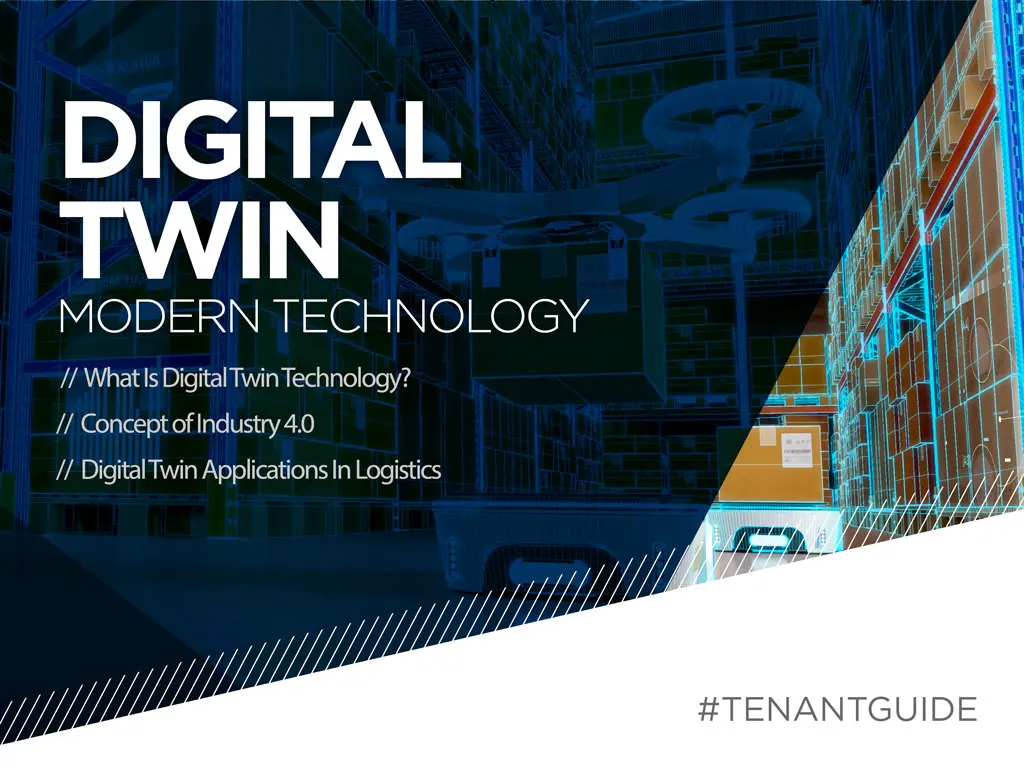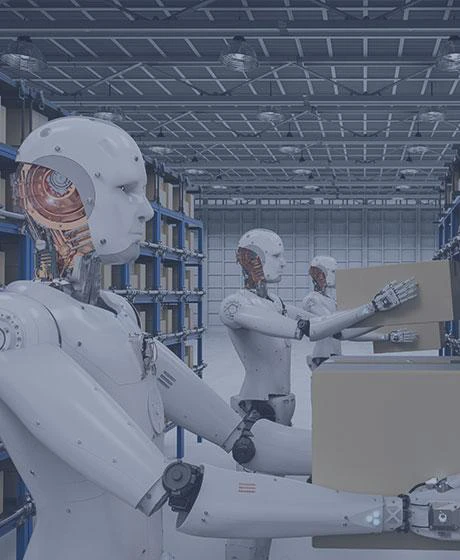Digital Twin Technology
23 january 2023

Contents
What Is Digital Twin Technology?
This modern technology is extremely useful in simulating actual processes and monitoring stock levels in real-time in order to identify any irregularities and to take remedial action. It may be particularly useful for big-box warehouses through improvements to work efficiency and safety as well as cost-cutting.
The digital twin takes account of the actual geometry and spatial layout, as well as a variety of data on the flow of goods, inventory levels, staff movement, etc. It can be used to simulate various scenarios of warehouse operations and to choose the most optimal one for both efficiency and safety. The digital twin also enables monitoring stock levels in real time and updating the digital model - it ultimately accelerates the response to change and discovery of potential irregularities.
Concept of Industry 4.0
The digital twin is frequently associated with Industry 4.0, or the Fourth Industrial Revolution, which conceptualises the use of modern technologies such as artificial intelligence, robotics or the Internet of Things to automate and optimise manufacturing. The aim is to bring together the physical and digital worlds, and consequently to increase the efficiency and flexibility of manufacturing processes and to improve the quality of products.
For commercial warehouses, Industry 4.0 means the automation of the flow of goods, monitoring stock levels and planning warehouse space using the digital twin technology. This, in turn, will increase warehousing efficiency, cut costs and improve safety.
The concept of Industry 4.0 is based on the use of the Internet of Things (IoT) technology, which collects data from various devices and systems - such data is then analysed to make the right business decisions with a view to automating processes and improving efficiency and productivity.
Another important aspect is the use of artificial intelligence (AI) and machine learning (ML) to analyse data and automate decision-making to allow quicker and more precise decisions.
Industry 4.0 will become part and parcel of commercial warehouse operations in the near future – it will improve warehouse management and optimise logistics, and consequently improve efficiency and bring costs down.
Digital Twin Advantages
The digital twin technology:
• Improves warehouse management and optimises logistics – the digital warehouse model enables precise planning and monitoring of warehouse processes in real time, helping to respond to any irregularities quickly and to optimise warehouse operations.
• Cuts costs – the digital twin technology brings warehouse costs down through process automation and better efficiency.
• Improves safety – the digital twin technology improves warehouse safety through the automation of warehousing processes and monitoring stock levels.
• Enhances service quality – with better warehouse management, the digital twin technology helps enhance the customer experience through faster order fulfilment and a lower risk of warehouse understocking.
• Allows for ongoing monitoring and analysing warehouse processes – the digital warehouse model enables you to monitor and analyse warehouse processes on an ongoing basis, and to respond to changes quickly and to identify any irregularities.
• Helps optimise warehouse space – the digital warehouse model allows you to test various options of arranging goods in a warehouse and consequently to improve warehousing efficiency and cut costs.
Digital Twin Applications In Logistics
An interesting example of the digital twin technology in logistics is the automated flow of goods in a warehouse. The digital warehouse model enables you to plan routes for warehouse vehicles and to monitor their movement in real time to be able to quickly respond to congestion or vehicle breakdowns.
Another example of the digital twin technology in logistics is the monitoring of warehouse stock levels. The digital warehouse model enables you to track stock levels in real time and to automatically generate purchase orders, helping to improve efficiency and cut the costs of warehouse understocking.
The optimization of delivery routes is yet another example. The digital warehouse model and delivery route data will help you test various routes and choose the best one to increase efficiency and reduce delivery costs.
And one more example: the automation of order picking. Thanks to the digital warehouse model and data on the location of goods in a warehouse, you can automatically generate order picking lists for warehouse staff, and ultimately improve efficiency and reduce picking errors.
The digital twin technology is therefore a very powerful tool in warehouse logistics – it helps plan warehouse processes precisely, monitor stock levels in real time and to optimise warehouse operations by putting various solutions to the test. The ultimate outcomes are better efficiency, lower costs, improved safety and an enhanced service quality.
This technology also enables you to monitor and analyse warehouse processes in real time, helping you respond to changes quickly and identify any irregularities. As a result, you are able to continuously streamline warehouse processes and improve warehouse efficiency.
To sum up, the digital twin is an exceptionally useful technology in commercial warehouse logistics. It helps plan warehouse processes precisely, monitor stock levels in real time and optimise warehouse operations by testing various solutions. Therefore, you may want to consider deploying this technology in your warehouse to increase efficiency, cut costs and improve safety.

